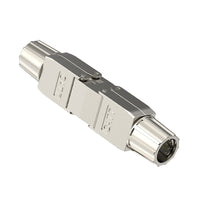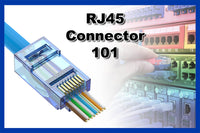Everything is connected these days, from doorbells to washers and dryers. With these greater demands on bandwidth in the home and the office alike, this has raised concerns about the viability of Ethernet cable wiring. One of the larger trends we’ve seen emerging in the last five or so years has been the low-voltage cable.
So, today, we’re going to take a closer look at low-voltage cables and why you’ll want to consider using these for your network. Standards haven’t changed drastically across the board, but this sort of cabling has benefits for networks, security systems, and even some low-voltage cable lighting applications.
What is a Low-Voltage Cable?
Most American homes operate off a 120-volt standard. Typical installations of these cables are best handled by licensed electricians, given the inherent risk associated with higher voltages. However, that consequently means that low voltage wiring is anything using 50 volts or less when looking at electrical requirements.
A low-voltage cable’s power demands differ when looking at the cabling, but there are a few common cable types that we can see as less power hungry right off the bat. The cabling standards are as follows:
- Ethernet Cabling: Cat5e, Cat6, Cat6A, Cat7, and even the newly certified Cat8 are all low-voltage wiring.
- Fiber Optic Cables: By design, fiber optic cabling is a low-voltage Ethernet standard with significantly higher throughput compared to the likes of traditional Ethernet cabling.
- Coaxial Cables: While mostly outmoded, RG6 and other coaxial cable standards still retain a low-voltage operation. These aren’t entirely necessary for home networks, aside from perhaps the modem.

Understanding Power Requirements for Cabling
What is readily available for low-voltage wiring is going to come down to the availability of materials in your area. When considering redoing things like your network setup, take the time to call up vendors and ask questions surrounding the power requirements for your needs. Typically, any low-voltage cable is going to have 50 volts or less of power, as previously stated. If you’re looking to reduce power consumption for your home, this is a great way to maintain throughput and bandwidth while minimizing energy costs.
Low-voltage Cable Applications
Typical applications of low-voltage cables are for the likes of internet access, connecting IoT devices to the parent network, and even providing power if you’re running Power over Ethernet (PoE) devices for maintaining continuity throughout the home. In some instances, you can have how voltage cable lighting setup, which works great for the likes of accent lights, outdoor lights, and other low energy requirements. For example, if your building or office requires a reliable network wiring system to work, you can opt for Ethernet cables like Cat6 and Cat6a cables or fiber optic cables for a high-speed internet connection.
Best Practices for a Low-Voltage Cable Wiring
In what ways can you set up a home network to guarantee consistent performance? Low-voltage cable choice is only part of the equation when designing your home network. This also applies to the likes of enterprise network design. Choosing the right cable for the job and exercising good practices ensures that you have consistent performance, reliable data delivery, and minimal downtime when done correctly.
Choosing the Right Cabling
When choosing the standard for your Ethernet cable wiring, it is important to understand the needs of your network. This differs from household to household, but take the time to understand your bandwidth needs before choosing cabling. Good quality cables aren’t cheap by any means, but the right cabling is going to guarantee consistent data delivery with minimal crosstalk.
Picking the Right Ethernet Standard
The Ethernet standard you choose for your cabling is going to make quite a difference in the performance of the network. While you can opt for Cat5e, this is an outmoded cable standard that is better left in the past. When picking the standard for your Ethernet cable wiring, the bare minimum I would suggest is Cat6. Ideally, if cost isn’t an issue, at least, I’d say go for Cat7. However, a solid midpoint in terms of throughput and reliability is going to be Cat6a.
Cat5e is still usable, but it is an Ethernet standard that is quite old by modern standards. If you’re starting from scratch, go with a more modern cabling.
Understand Your Bandwidth Needs
How much throughput do you need? Home networks typically have plenty of bandwidth, but understanding the needs of your network is going to go a long way in determining how many low-voltage cables you’ll be running throughout the home. Take the time to meter your connections, ideally over the course of a week or more. This should give a solid understanding of the minimum bandwidth needed.
The Right Conductor
If you’re sticking with twisted pair cabling like Cat6a, you’ll want to pick a reliable conductor. There are cheaper low-voltage cable standards on the market that rely on copper jacketing over an aluminum core. These are fine for stopgap solutions, but they lack the reliability and consistency of a solid copper core. This isn’t much of a consideration if you’re planning on running fiber optic cabling. However, if you’re sticking with twisted pair cabling, go for solid cores.
Organization and Labeling
This can be a real pain in the neck to implement, but it saves headaches in the long run. Labeling and organizing your cabling isn’t just a good practice, but a necessary one when considering maintenance. Cables will get damaged; that’s just a part of life. However, taking the time to organize and label cables clearly will make replacement of your low-voltage cable a cinch.
Avoid Wi-Fi If Possible
Wireless internet is seen as a necessity in the modern world, but it has its issues. This is something seen time and time again when considering the size of a home or business campus. If possible, you’ll want to go for hard-wired connections. This provides consistent performance with minimal downtime and optimal saturation of the connection from all connected machines. Wi-Fi is best suited for areas where mobility and ease of use are concerned.
Exercise Good Cable Safety
Modern Ethernet cable wiring is fairly robust, but you’ll still want to understand the limits of the cabling. Exceeding the bend radius, pulling roughly on cables, and rolling over them with the likes of chairs or carts can damage the cable irreparably. Cables will get damaged over time, make no mistake about that. However, by taking the time to exercise good cable safety, you’re prolonging the lifespan of your low-voltage cables and minimizing the cost of maintenance.
Conclusion
Low voltage wiring has some definite benefits when viewing the likes of energy consumption. It has a wide range of applications that make it a real boon when considering constructing a home network. If you’re wanting to get into low-voltage Ethernet cable wiring for your home, there’s never been a better time to start.
For more information on this topic, you can keep up on our blogs. While VCELINK offers general and basic information for our customers and other visitors to the website, it’s not professional advice.




This is a very clear and practical overview of low-voltage cabling. I especially appreciate the tips on conductor quality and cable handling — small details that often make a big difference in long-term reliability. Thanks for breaking it down in a way that’s accessible yet informative!
This article presents a clear and pragmatic overview of low-voltage cabling by marrying technical details with real-world advice—explaining not only what qualifies as low voltage and common cable types (Ethernet, fiber, coax) but also emphasizing best practices like conductor quality, correct standards, labeling, and physical care. The strength lies in its balance: it doesn’t just define terms, but guides readers through choices (e.g. favoring Cat 6/6a over Cat 5e), while cautioning against shortcuts like aluminum-cored cables and reminding about maintenance. Overall, it’s a solid primer that both novices and intermediate readers will find useful before diving deeper into network or low-voltage systems.
The VCELINK blog post on low-voltage cables offers a concise and informative overview of this essential component in modern electrical systems. By defining low-voltage wiring as systems operating at 50 volts or less, it highlights the importance of low-voltage cables in powering devices like Ethernet networks, fiber optics, and even low-voltage lighting. The article emphasizes the benefits of low-voltage wiring, such as reduced power consumption and suitability for applications like Power over Ethernet (PoE) devices and smart home systems. Additionally, it provides practical advice on selecting the right cable type and adhering to best practices to ensure consistent performance and reliability in network setups. This resource is particularly valuable for homeowners, DIY enthusiasts, and professionals seeking to understand and implement low-voltage wiring solutions effectively.
Great read! This blog gives a clear, practical overview of low-voltage cabling — what it is, why it matters, and how to make smart choices (cable type, bandwidth, conductor). I especially liked the points about solid copper vs cheaper core materials, and the reminder about labeling/organization — often overlooked, but so important in the long run. Thanks for sharing!